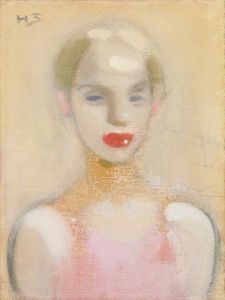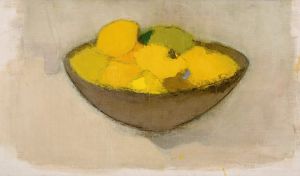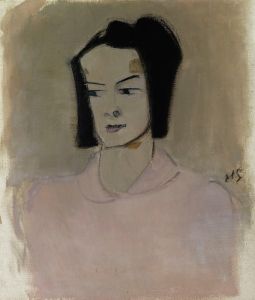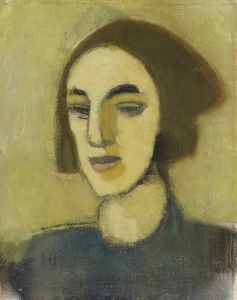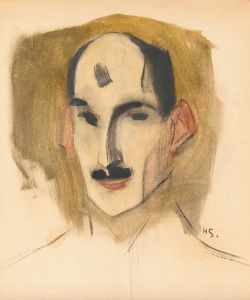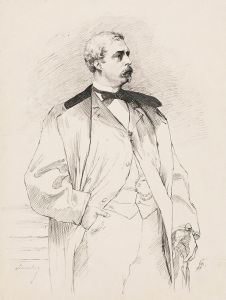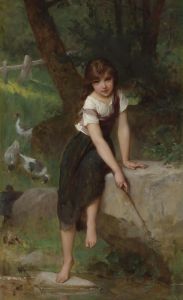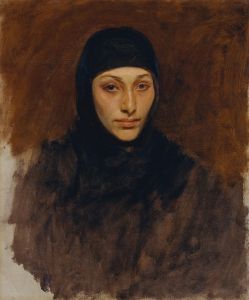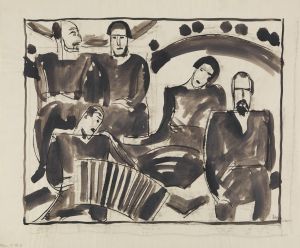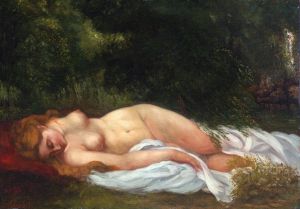
Little Liisa
A hand-painted replica of Helene Schjerfbeck’s masterpiece Little Liisa, meticulously crafted by professional artists to capture the true essence of the original. Each piece is created with museum-quality canvas and rare mineral pigments, carefully painted by experienced artists with delicate brushstrokes and rich, layered colors to perfectly recreate the texture of the original artwork. Unlike machine-printed reproductions, this hand-painted version brings the painting to life, infused with the artist’s emotions and skill in every stroke. Whether for personal collection or home decoration, it instantly elevates the artistic atmosphere of any space.
Helene Schjerfbeck (1862–1946) was a Finnish painter known for her modernist approach and distinctive style, which evolved significantly over her long career. One of her notable works is "Little Liisa," a painting that exemplifies her unique ability to capture the essence of her subjects with minimalistic yet expressive techniques.
"Little Liisa" was painted in 1907, during a period when Schjerfbeck was increasingly focusing on portraiture. This work is a testament to her skill in conveying emotion and character through subtle details and a restrained palette. The painting depicts a young girl, Liisa, whose identity beyond the painting remains largely unknown. Schjerfbeck's choice of subject reflects her interest in capturing the innocence and simplicity of childhood, a theme recurrent in her work.
The composition of "Little Liisa" is characterized by its simplicity and clarity. Schjerfbeck employs a limited color palette, using soft, muted tones that create a serene and introspective atmosphere. The background is understated, allowing the viewer's attention to remain on the subject. This approach is typical of Schjerfbeck's style, where the focus is on the emotional and psychological depth of the subject rather than elaborate settings or details.
Schjerfbeck's technique in "Little Liisa" is notable for its use of light and shadow to create depth and dimension. The gentle play of light across the girl's face highlights her delicate features and imbues the portrait with a sense of life and presence. Schjerfbeck's brushwork is both precise and fluid, capturing the softness of the girl's skin and the texture of her clothing with remarkable subtlety.
The painting is also significant for its modernist elements. Schjerfbeck was influenced by contemporary movements in art, including Impressionism and Symbolism, which is evident in her use of color and form. However, she developed a distinctive style that set her apart from her contemporaries. In "Little Liisa," her modernist sensibilities are apparent in the way she abstracts the subject, focusing on essential forms and eschewing unnecessary detail.
"Little Liisa" is part of Schjerfbeck's broader body of work that explores themes of identity, emotion, and the passage of time. Her portraits often go beyond mere representation, delving into the inner lives of her subjects. This painting is no exception, as it captures a moment of quiet introspection, inviting viewers to contemplate the thoughts and feelings of the young girl.
Helene Schjerfbeck's work, including "Little Liisa," has gained increasing recognition over the years. Her paintings are celebrated for their emotional depth, technical skill, and innovative approach to portraiture. Today, Schjerfbeck is regarded as one of Finland's most important artists, and her works are held in high esteem by art historians and collectors alike.
"Little Liisa" continues to be appreciated for its timeless beauty and the insight it offers into Schjerfbeck's artistic vision. The painting remains an enduring example of her ability to convey the complexity of human emotion through the simplicity of form and color.





